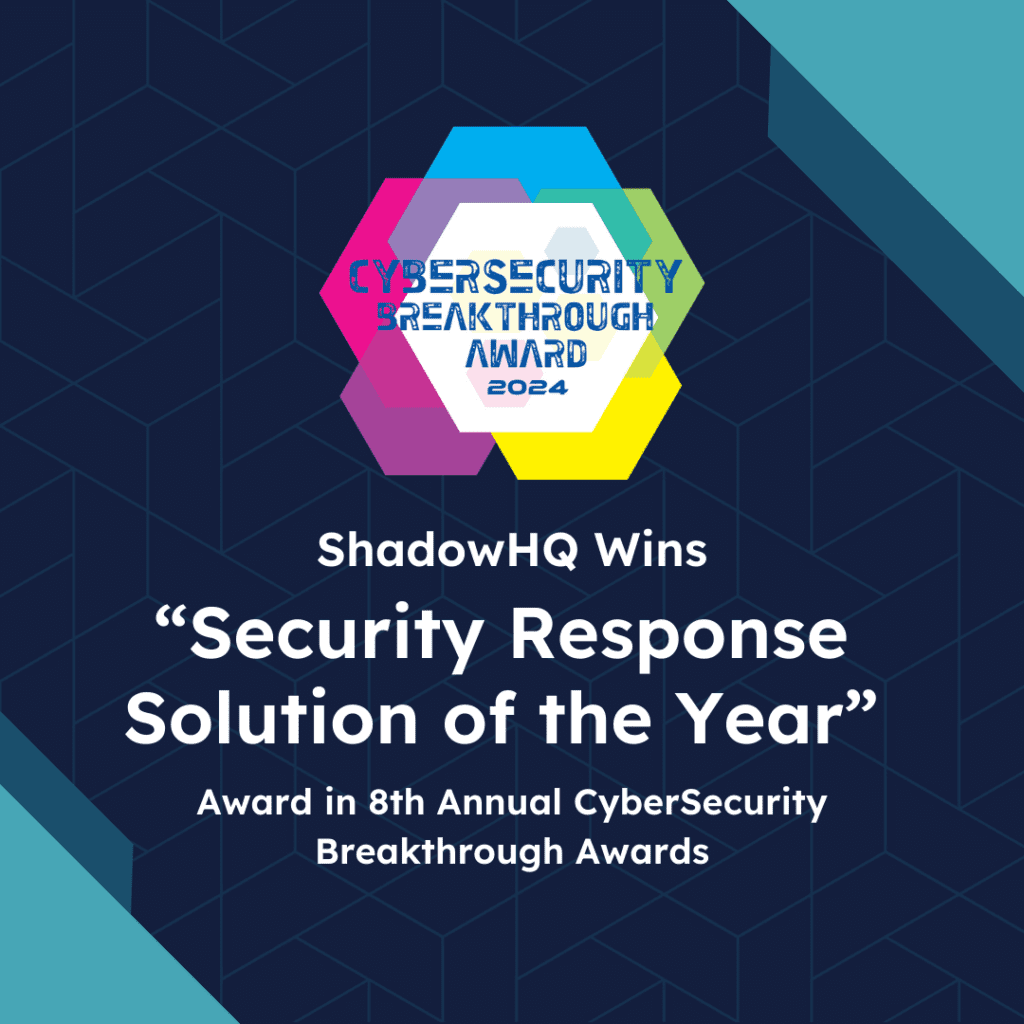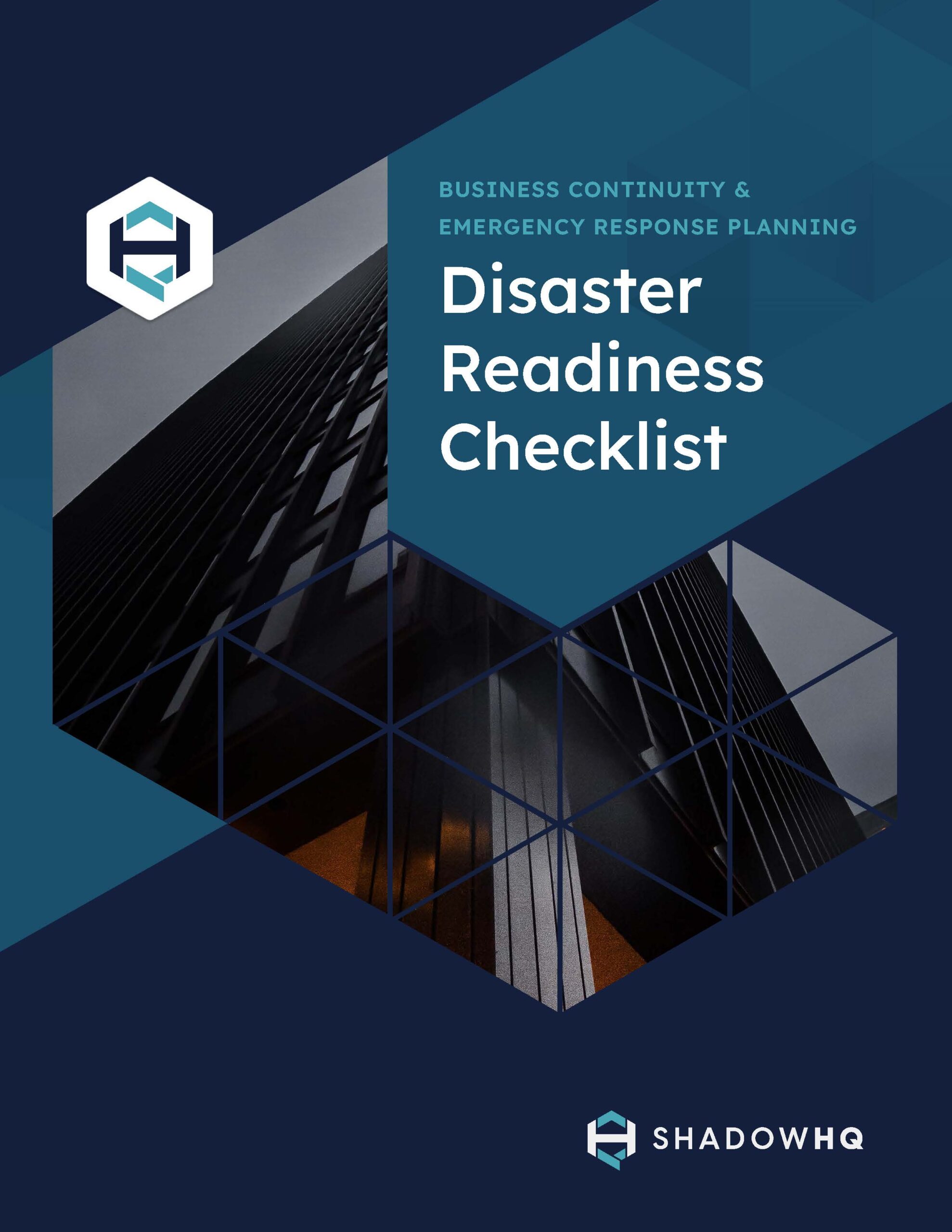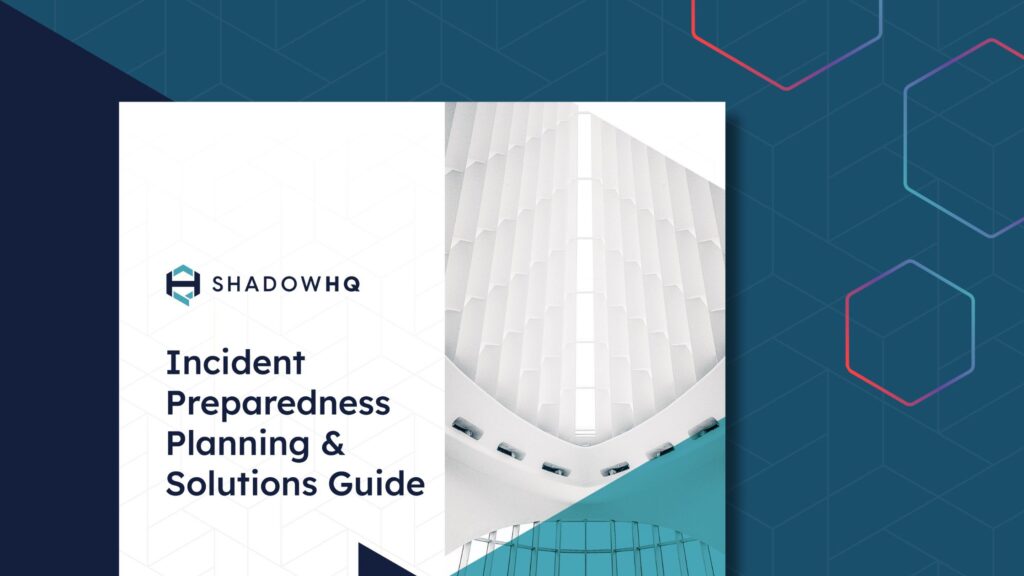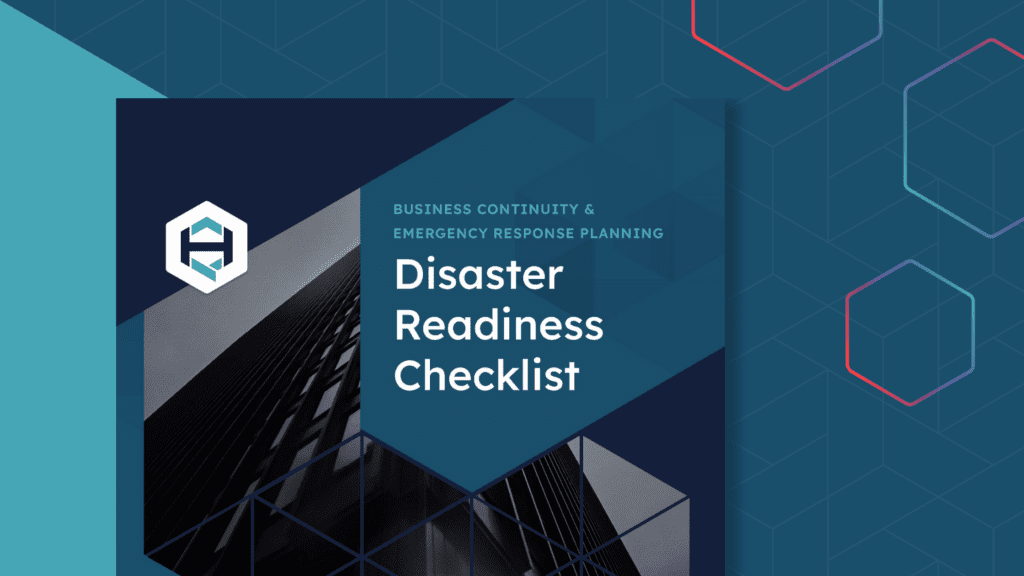The Evolving Landscape of Cyber Incident Response: Why It’s Time to Rethink Your Strategy
Modern cyber threats are dynamic, continuously evolving risks your organization must manage. Relying on solutions and plans from years ago may fall short in the face of a modern incident.
The annual monetary damage caused by cybercrime in the United States grew by 21% in 2023 from the previous year — reaching a new all-time high of $12.5 billion. Avoiding monetary damage or minimizing it by having an effective incident response strategy can go far in avoiding a significant hit to the business.
Organizations must have the right platforms and incident response plans to effectively identify, contain, eradicate, and recover from a cyber attack. Otherwise, outdated plans relying on legacy processes will struggle to keep up with modern threats.
ShadowHQ was recently named Security Response Solution of the Year for 2024 by Cybersecurity Breakthrough Awards due to our industry-leading platform designed to help organizations communicate and collaborate in a crisis. This award is a testament to our ongoing commitment to equipping companies with the tools they need to recover rapidly in the face of evolving threats.
So, let’s break down why organizations must re-evaluate their incident response plans and strategies so you’re ready to protect the business.
How Cyber Incident Response Is Changing
How enterprises respond to incidents has rapidly changed; we don’t expect it to slow down anytime soon. New cyber threats are always emerging, and the pace of tech advancement enables new attack vectors and capabilities for malicious actors.
Cyber attackers are using increasingly sophisticated technologies to enable faster, multi-layered attacks. AI, machine learning, and automation have quickly enabled a new cyber threat landscape.
Fortunately, your teams can leverage emerging tech to defend your IT assets and adjust your strategies. Developing or refining incident response plans that are ready to meet the current and future threat landscape head-on is crucial to the company’s longevity.
Why Your Response Process Needs to Evolve
Responding to current threats with outdated response plans can have disastrous consequences. Containing and eradicating an incident will be challenging, and since the attack remains unchecked for longer, recovery timeframes will also be extended.
Proactively creating incident response plans enabling agility and speed has never been more important. Adopting the right platforms that refine incident response plans is no longer optional but necessary.
One overarching cornerstone of modern processes is adopting an orchestration platform that equips response teams with a secure bunker to collaborate and mount an effective response.
Otherwise, you may struggle to eradicate and recover from an incident and face a direct financial impact. Additionally, beyond the financial impact, there can be significant reputation damage that can be challenging to repair, possibly having a long-term impact on business growth.
Cybersecurity Breakthrough Awards — Security Response Solution of the Year: A Testament to Our Industry Leadership
ShadowHQ was recently honored to receive the Cybersecurity Breakthrough Award for Security Response Solution of the Year, a prestigious award that speaks to our industry leadership. We’re committed to innovation in cybersecurity, and this award reflects that ongoing commitment.
Our secure out-of-band bunker gives teams everything they need to keep collaborating so they can mount an effective response. There is no need for legacy methods like call trees or solely relying on primary communications.
We already help reduce response teams and bolster resilience in any crisis, from cyber attacks to natural disasters — and we’ll be staying on top of emerging technologies to enhance our platform continually.
“ShadowHQ ensures stakeholders across reliant functions understand their role in any event.”
Steve Strout, Founder & CEO of XpeedStudio

The Changing Role of CISOs in Incident Response
The responsibilities of CISOs have evolved along with the threat landscape. CISOs can no longer wait for an incident before responding — planning and adopting the right tools are critical. So, let’s explore a few ways the CISO role has changed in recent years.
Moving from Reactive to Proactive Leadership
CISOs are no longer just firefighters who respond after a breach occurs. The modern CISO is expected to proactively anticipate threats and implement robust defenses before incidents happen. This crucial shift involves integrating threat intelligence, continuous monitoring, and advanced detection tools into daily operations to minimize risks.
Building Cross-Functional Response Teams
With cyber incidents impacting multiple departments, the CISO’s role has expanded to bridge the gap between IT, legal, HR, and communications. Effective CISOs are leading cross-functional response teams that ensure a coordinated effort across the entire organization, improving the speed and efficiency of responses.
Emphasizing Speed and Agility in Response
A slow response to a crisis can result in devastating damage. CISOs are now prioritizing agility, creating streamlined processes and response playbooks that allow immediate action. These changes include leveraging automation and orchestration tools to minimize manual steps and improve real-time decision-making.
Engaging External Stakeholders
Managing external stakeholders like third-party vendors, legal advisors, and law enforcement is becoming a critical responsibility for CISOs. Involving external parties early in the response process ensures that the organization can act swiftly and comply with regulatory requirements while addressing public relations concerns when necessary.
Ensuring Accountability and Continuous Improvement
As cybersecurity becomes more integrated into business operations, CISOs are tasked with establishing clear accountability within response teams. Regular post-incident reviews and simulations are now standard practices, allowing CISOs to identify weaknesses, iterate on response plans, and continuously improve the organization’s resilience.
Customer Testimonials: Real-World Success Stories
We’re proud to have equipped our customers with the tools to enable faster resolutions, better collaboration, and ultimately minimize the damage during an incident. Check out a few testimonials to see what real customers and industry insiders have said:
- “ShadowHQ and its Playbook Manager are invaluable; the platform centralizes critical information, ensuring compliance and rapid deployment capabilities that are crucial for minimizing downtime and mitigating risks effectively. It’s not just a tool — it’s an essential part of our strategy to stay ahead in an ever-evolving threat landscape.” Taiga Walker, Cyber Threat Analyst III at Arcadia
- “ShadowHQ is an extremely powerful tool. Speaking from my time as an active cybersecurity practitioner, having policy and playbook templates readily available is a massive time saver. From a market perspective, ShadowHQ is revolutionizing the incident response space.” Ken Buckler, Research Director at IT industry analyst firm Enterprise Management Associates (EMA)
- “Great communications app! Helped me easily communicate with my team in an emergency.” VP of IT, A technology company

Organizations Must Evolve Alongside the Threat Landscape
CISOs and other stakeholders can’t rely on outdated processes and legacy software to take on modern threats. Businesses of all sizes must evolve to keep up with emerging threats — and ultimately outpace them.
Adopting the right platforms that equip your teams to rapidly detect, contain, and recover from a cyber incident is critical to minimizing its financial and reputational impact.
ShadowHQ’s recent award speaks to our ongoing focus on equipping businesses with the necessary tools to rapidly respond to cyber incidents. Our platform is already a significant asset to any response strategy, and we’ll always explore how new tech can improve our offerings.
Are you ready to step up your incident response strategies with ShadowHQ? Download this Impact Brief from security and IT industry research firm Enterprise Management Associates to learn more about ShadowHQ’s transformational platform.
EWEBINAR
Experience the ShadowHQ platform
Walk through a cyber breach scenario in a 15 minute demo.

GUIDE DOWNLOAD
Disaster Readiness Checklist
When an emergency happens, every minute counts.


